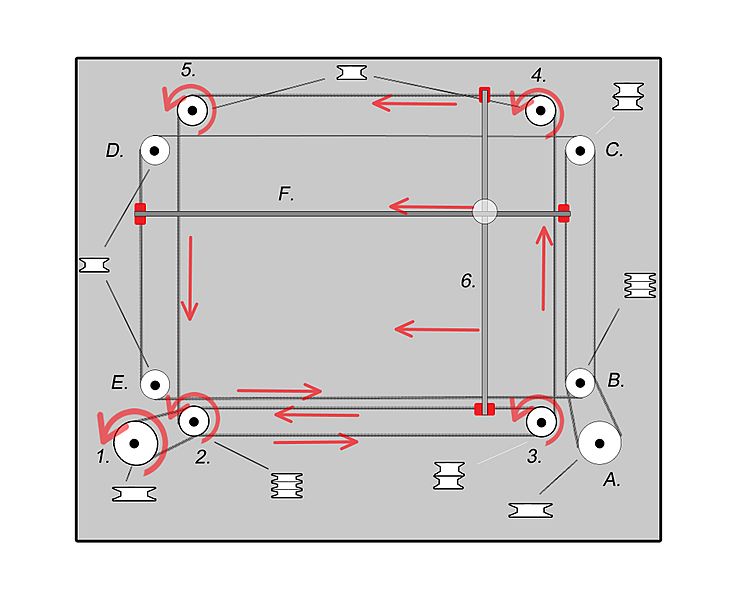Image: Etchasketch

Description: Basic mechanism of operating a 2-dimensional plotter. All of the numbered components correspond to those which move the plotter's stylus horizontally, and the lettered components with those which move it vertically. Device consists of a series of 10 pulleys, 6 cables, 2 rails, and a stylus. Pulley 1 (single-groove) is connected to pulley 2 (triple-groove) via a short infinite reciprocating cable. Two connects to 3 (double-groove) via a longer reciprocating cable which is attached along its upper course to one end of the vertical rail (6), and then a third cable runs from 2 to 3, 4 and 5 (4 and 5 are single-groove) via another much longer loop of cable which attaches between 4 and 5 to the other end of the vertical rail. Likewise, A connects to B, B connects to C and attaches to the horizontal rail (F), and finally B connects to C, D, and E, attaching to F at its other end between D and E. Turning pulley 1 counterclockwise as shown causes 2 to rotate the same way, and this causes all pulleys connected to 2 (3, 4, and 5) to do the same. The rail to which these cables is connected (6, connection points marked in red) will move to the left both at ends, causing the stylus to move in the same direction along the other rail (F). Clockwise movement of pulley 1 has the opposite effect. Pulleys A-E operate the same as 1-5, and act on the horizontal rail (F) to slide the stylus up and down along the vertical one (6).
Title: Etchasketch
Credit: Own work
Author: KDS4444
Usage Terms: Creative Commons Attribution-Share Alike 4.0
License: CC BY-SA 4.0
License Link: https://creativecommons.org/licenses/by-sa/4.0
Attribution Required?: Yes
Image usage
The following page links to this image:

